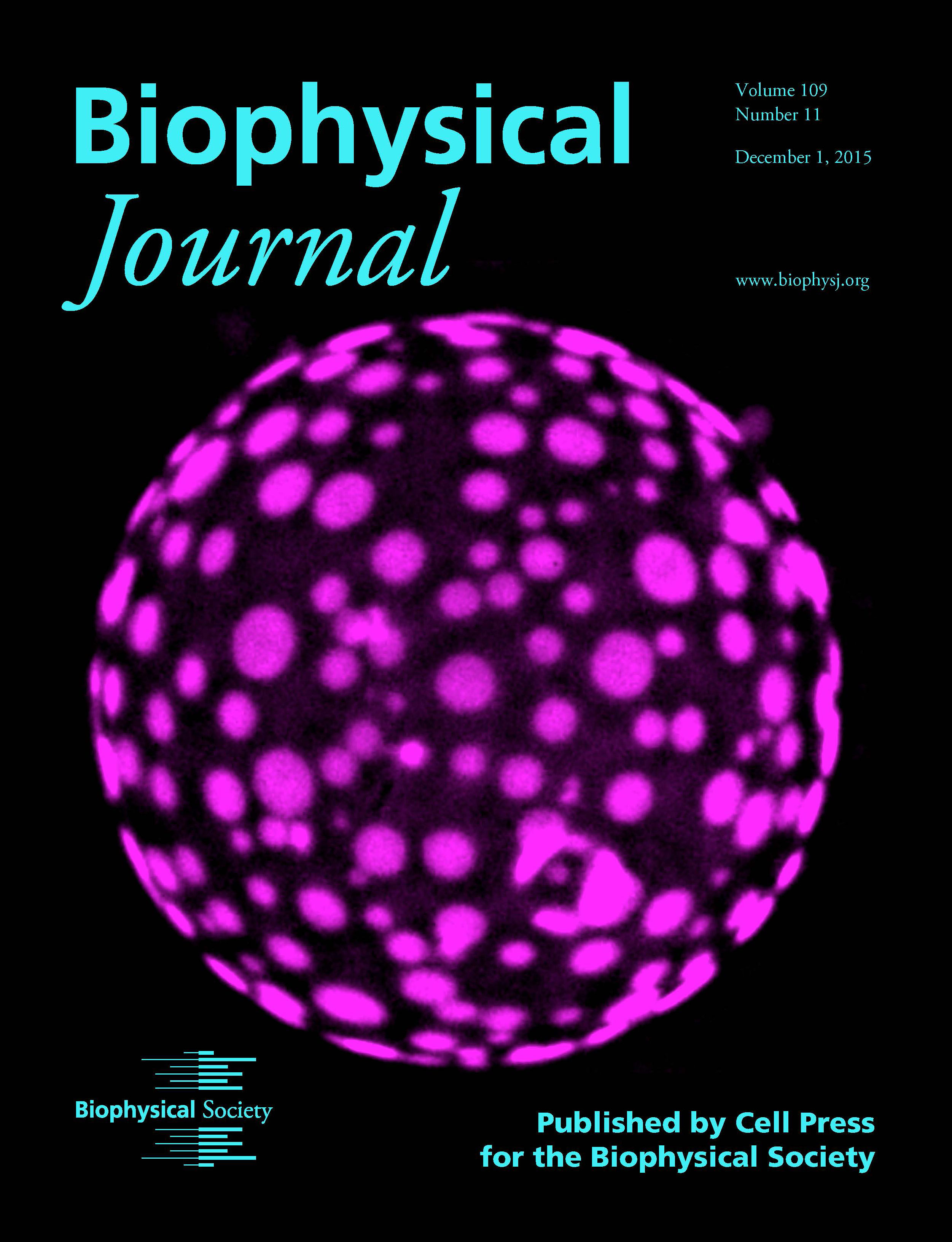 This image of domains on a lipid vesicle was captured by Matthew Blosser, who is now an NIH NRSA fellow at the University of Oxford. In the image, the lipids within the membrane of a ~70 micrometer giant unilamellar vesicle have demixed into coexisting liquid phases. The bright domains are the liquid-disordered phase, which are diffusing in a background of dark, liquid-ordered phase. The image was obtained with an epifluorescence microscope using a 40x air objective. The spherical vesicle was imaged at several different focal planes, and these images were then projected onto one 2-dimensional image.
This image of domains on a lipid vesicle was captured by Matthew Blosser, who is now an NIH NRSA fellow at the University of Oxford. In the image, the lipids within the membrane of a ~70 micrometer giant unilamellar vesicle have demixed into coexisting liquid phases. The bright domains are the liquid-disordered phase, which are diffusing in a background of dark, liquid-ordered phase. The image was obtained with an epifluorescence microscope using a 40x air objective. The spherical vesicle was imaged at several different focal planes, and these images were then projected onto one 2-dimensional image.
One striking aspect of our image is how cleanly the vesicle divides into regions of light and dark. All of the have nearly the same brightness (accounting for geometric effects), and each individual domain has a single, uniform brightness. This means that, although this vesicle is made of several different lipid components, only two phases are present within the membrane, each with well-defined physical properties. It also means that the domains on each face of the membrane are perfectly aligned with each other, at least on length scales observable by fluorescence microscopy. As a result, the two monolayer leaflets of the membrane must be coupled. This result is somewhat non-intuitive because interactions between the two leaflets are at least partially mediated by the lipid acyl chains, which are floppy.
We were inspired by our collaborator Aurelia Honerkamp-Smith and by other researchers to measure this effect. Specifically, we measured the energy penalty a vesicle would have to pay in order to misalign the domains on each face of the membrane. Because we knew that domains did not misalign on micron length scales of their own accord, we decided to give a push to the domains on only one side of the membrane. Because that push had to be a very strong one, we built a microfluidic chamber into which we flowed vesicles, which burst on the solid support. Flowing water through the chamber moved the upper monolayer of the membrane over the lower monolayer, which was firmly stuck to the substrate. By measuring how hard we needed to push an individual domain to make it move (and by collaborating with Mikko Haataja and Tao Han, who produced some beautiful theoretical work), we extracted a value for the interleaflet coupling. The value we found agrees with a previous theoretical prediction (there were no previous measurements to our knowledge), and it could help explain how changes in lipid organization are communicated across cell membranes. More information about our research is found in our article in the new issue of Biophysical Journal and at http://faculty.washington.edu/slkeller/.
-Matthew Blosser, Aurelia Honerkamp-Smith, Tao Han, Mikko Haataja and Sarah Keller